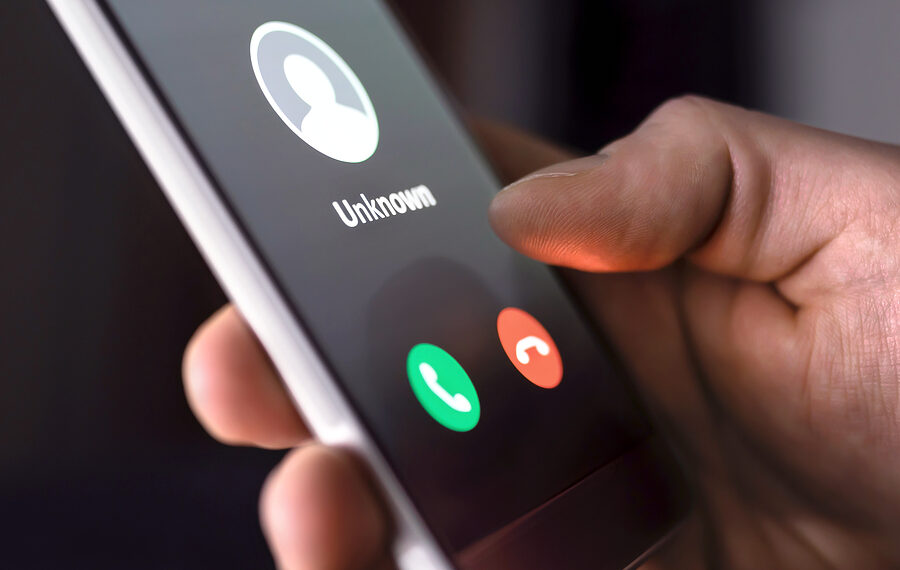While the overall number of unwanted calls has seen a 44% decrease from 3 million in 2022 to 2.1 million in 2023, a concerning trend has emerged: “imposter” calls remain the most frequently reported type of calls for the fifth consecutive year, being responsible for a third of the calls.
Key findings
- The number of unwanted calls decreased by 44% (3M to 2.1M) between 2022 and 2023, with robocalls dropping by 37% from 1.8 million to 1.2 million. Over the same period, the number of people on the Do Not Call registry increased by 2.7 million potentially accounting for some of the decreases in spam calls.
- The ratio of robocalls to live callers has also decreased from 3.1:1 in 2021 to as low as 1.6:1 in 2023.
- Despite these improvements, the persistence of “imposter” calls involving scammers impersonating agencies is noticeable. They were responsible for over a third of all unwanted calls in 2022 and just under a third in 2023.
- Delaware residents were the most affected in 2023, with every 1,000 phones registered on the DNC list receiving 12.7 calls. In contrast, Puerto Ricans experienced the least impact from unwanted calls with just 2.53 unwanted calls per 1000 registered numbers.
- Registrations to the Do Not Call registry have been steadily increasing, with a growth rate of 1.5% per year, starting at 209 million in 2011 and reaching 249 million in 2023.
Incogni Research unveils critical findings from the latest Federal Trade Commission (FTC) data, indicating worrisome figures for unwanted calls in the United States.
To understand the impact of unwanted calls on the typical US resident, researchers analyzed complaints to the Do Not Call registry.
The earliest available data from 2011 reveals 2.3 million reported unwanted calls. This steadily grew to 7.2 million in 2017, but, since then, reported unwanted calls have gradually decreased, with a notable drop following 2021, resulting in 3 million calls in 2022 and just 2.1 million in 2023 (44% decline YoY).
In a state-level breakdown, Delaware residents were the most affected by unwanted calls in 2023, with every 1,000 phones registered on the DNC list receiving a staggering 12.7 calls.
Ohio secured second place with 11.5 complaints filed per 1,000 numbers, followed by Nevada in third place, with 11.1 reported calls per 1,000 registered numbers.
Meanwhile, Puerto Rico demonstrated the lowest number of unwanted calls in 2023, with only 2.6 calls reported for every 1,000 registered phones.
It’s worth noting that, with the increasing number of registrations to the DNC list, the ratio of pre-recorded calls, also known as robocalls, to live calls made by a human being has decreased from 3.1:1 in 2021 to as low as 1.6:1 in 2023. Robocalls have seen a significant decline overall, dropping by 37% from 1.8 million to 1.2 million between 2022 and 2023.
When it comes to the types of reported unwanted calls, among the most frequently reported in 2023 were “imposters” and “medical prescriptions,” making up 58%. “Imposters” have consistently been the most encountered call type since 2019, maintaining a strong presence at 32% in 2023.
The imposter label refers to all unwanted calls where the caller impersonated someone else, an agency, or a company. Across all reported topics throughout the years, incidents involving imposters accounted for nearly a quarter of reports, totaling 2.8 million reports.
Darius Belejevas, Head of Incogni, comments on the research, stating, “While we observe the declining trend in robocalls, attributed to steady growth in Do Not Call list registration, the number of imposter calls remains concerning. It is crucial to address this threat and implement effective measures to protect US residents from the nuisance of this type of call.”
Despite the positive trend in Do Not Call list registrations, with a growth rate of 1.5% per year reaching 249 million in 2023, the persistence of imposter calls remains a challenge. Incogni emphasizes the need for comprehensive data privacy legislation and encourages actions to raise awareness about possibilities to limit the number of unwanted calls, including registration to the Do Not Call list.
The data used in this research is available here: public dataset
[Featured Image Credit]






